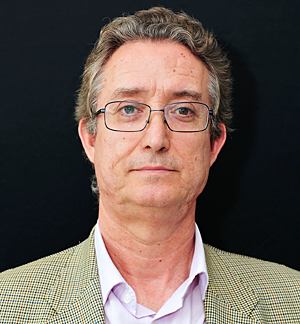High Flux/High Temperature Concentrated Solar Thermal Power Technologies and Applications (Invited Speech)
Even though solar radiation is a source of high temperature and exergy at origin, with a high radiosity of 63 MW/m2, sun-to-earth geometrical constraints lead to a dramatic dilution of flux. It is therefore an essential requisite for efficient solar thermal power plants and high temperature solar chemistry applications to make use of optical concentration devices that enable the thermal conversion to be carried out at high solar fluxes and with relatively low heat losses. Solar Thermal Power Plants (STPP) have generated since 2006 a dynamic market for renewable energy industry and a pro-active networking within R&D community worldwide. At present there are 5 GW of STPP installed in the world, however most of them located in few countries (Spain, US, Morocco, South-Africa, Chile, China, UAE and other).
In the short period of 10 years STPP have achieved a noticeable reduction of cost and the most recent Power Purchase Agreements (PPAS) in countries like Morocco or Chile are moving in the range of 10 to 14 c€/kWh. However, in today’s competitive global market this is not enough and concentrated solar technologies are forced to speed up their learning curves because of the drastic reduction of costs by other renewable energy technologies and the need of optimizing dispatch and grid integration for markets with high penetration of solar and wind. The urgent need to accelerate the learning curve by moving forward to PPA below 10 c€/kWh and the promotion of sun-to-fuel applications, is driving the R&D programs for the new SET Plan in Europe. Both, industry and R&D community are accelerating the transformation by approaching high flux/high temperature technologies and promoting the integration with high efficiency conversion systems.
In optical engineering the technology evolution is heading to ultra-modular concentrators of plug-and-play type with high degree of automatism, reliability and flexible unmanned operation that might be subject to integration in different environments. In heat transfer R&D is accelerating the development of new thermal fluids for operation at higher temperatures and pressures; new thermal (sensible heat and phase change) and thermochemical energy storage systems; solar receivers and reactors with advanced volumetric absorbers, micro and mini-channels or clouds of particles for higher apparent absorptivity. Energy conversion development is looking for the use of new turbomachinery and cycles making use of supercritical fluids as well as the integration of direct conversion systems. Potential for levelized cost of electricity below 10 c€/kWh by 2020 and less than 7 c€/kWh by 2030; incrementing dispatchability; the production of solar fuels and chemicals and the optimized integration in some industrial processes are guiding R&D globally.

